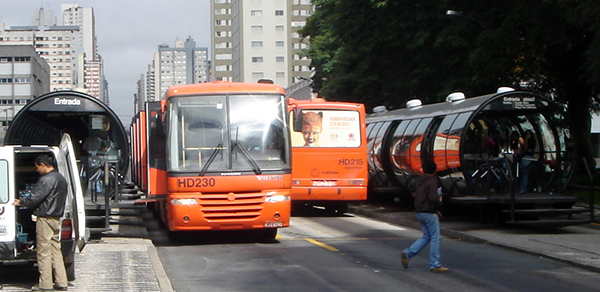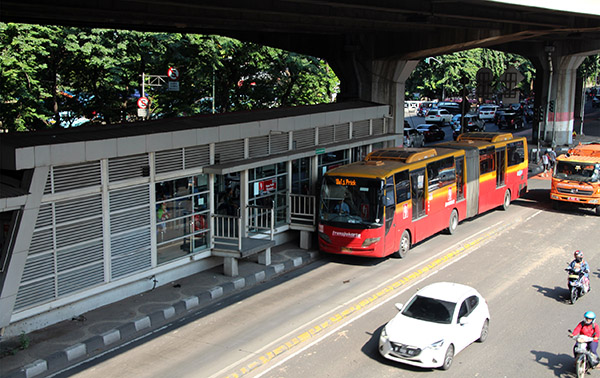Manila BRT project gets funding from World Bank
First it was Cebu that got funding for the Department of Transportation’s (DOTr) Cebu Bus Rapid Transit (BRT) Project. Now, Manila will get its own BRT as the DOTr has secured US$64.6 million from the World Bank (WB) for the Manila BRT Project.

ONE OF CURITIBA’S BRTs. The Marechal Floriano station of Linha Verde BRT Curitiba.
WB approved funding for the US$109.4-million Manila BRT Line 1 project earlier this month, and will provide a safe, reliable, and comfortable ride for some 300,000 commuters who ply the España Boulevard-Quezon Avenue corridor. WB and the Clean Technology Fund will shoulder US$64.6 million while the Philippine government will cover the remaining US$44.8 million.
“By providing an affordable and convenient public transport option, this project will help make job and education opportunities more accessible, especially for the poor residing around the BRT route,” said World Bank Country Director Mara Warwick. “High-capacity transport systems like BRT help reduce greenhouse gases, boosting the country’s contribution to the global fight against climate change.”

THE WORLD’S FIRST. The Rede Integrada de Transporte, Curitiba’s first BRT line.
BRTs are similar to Metro Manila’s LRT and MRT: they run on dedicated lanes and ferry a lot of people from one place to another. As the name implies, BRTs use buses in place of trains, making the system simpler and cheaper to construct, operate and maintain.
Apart from the actual BRT, the project will also develop support infrastructure along the España Blvd-Quezon Ave corridor, including bus terminals and stations, segregation barriers, sidewalks, warning and direction signs, and pedestrian facilities.
Zhihong Zhang, Senior Program Coordinator of the Clean Technology Fund, said BRTs were a cost-effective way of reducing greenhouse gas emissions. “Implementation of this project alone will prevent the release of around 2.6 million tons of carbon dioxide equivalents into the atmosphere in the next 20 years. Transport is the fastest growing source of greenhouse gas emissions globally and projects like this show the road to a cleaner future.”

THE WORLD’S LONGEST. Indonesia’s Transjakarta is currently listed as the world’s longest BRT route, connecting the city of Jakarta over a 210-kilometer dedicated lane.
The first BRTs were launched in Curitiba, Brazil in 1974 and have since grown in popularity. It’s a very efficient means of transporting large numbers of people across large distances without costing an arm and a leg for the government.
BRTs are now either in place or under development in over 150 cities situated in countries like the United States, Brazil, Australia, India, and Indonesia, which has the longest BRT route at approximately 210 kilometers.
Photos grabbed from Wikipedia
Source: World Bank, World Bank press release, Manila Times, Philippine Daily Inquirer, BusinessWorld Online













